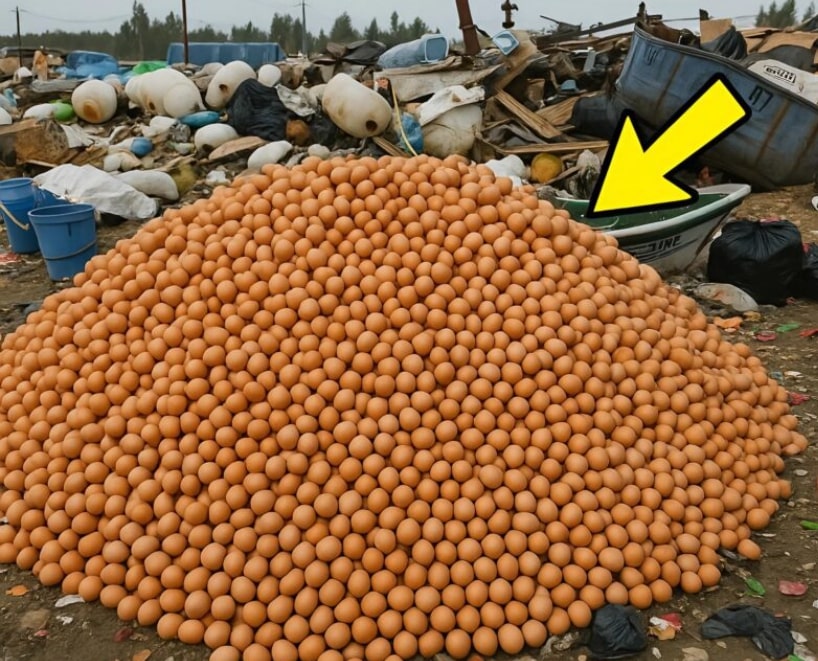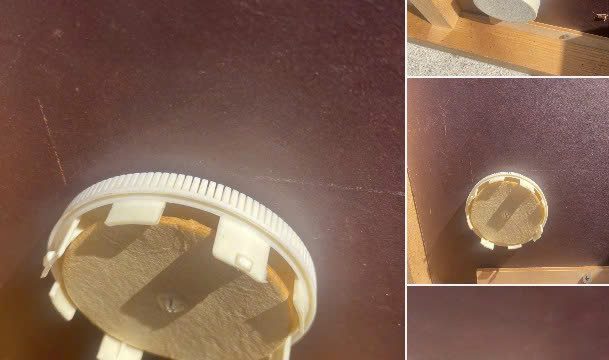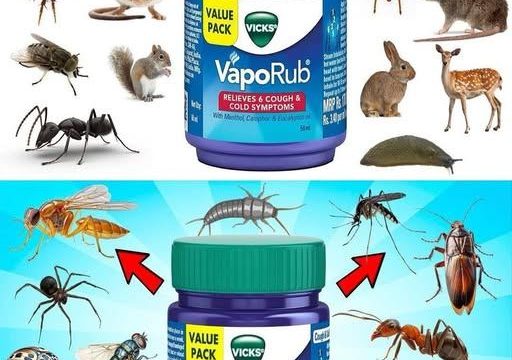In the spring, what seemed like a routine health inspection led to the disposal of approximately 20,000 chicken eggs from local retailers across the city. These eggs were removed because most were deemed unfit for sale—expired, cracked, or visibly dirty. Without much thought, all of them were gathered and transported to the city landfill, a restricted area enclosed by barbed wire fencing. Trucks delivered load after load of egg cartons and dumped them among piles of typical garbage.

As days passed, the rain soaked the cardboard cartons, causing many to collapse. Some eggs were broken open and eaten by scavenging birds, while others were crushed or simply lost among the heaps of waste. The event faded quickly from public attention, and the eggs became just another forgotten detail in the mountain of discarded items. Life continued as usual—until, almost three months later, something completely unexpected happened. One early morning, the landfill caretaker noticed something unusual: the crows that normally flocked to the organic waste pile were gone. Intrigued by the absence of these ever-present birds, he walked toward the area to investigate. As he approached, he was stunned by what he saw.
The trash pile appeared to be moving. On closer inspection, it became clear that thousands of tiny, yellow chicks were running around—chirping, lively, and unmistakably alive. These fluffy creatures were hopping over moldy potatoes, darting between empty yogurt containers, hiding beneath old tires, and squeezing into the crevices of broken furniture. They were everywhere, squeaking and flitting about the landfill like it was their natural playground. The caretaker was left speechless. How could this have happened? There had been no hens to incubate the eggs, no artificial incubators, no one providing warmth, care, or nourishment. The landfill was a harsh, unsanitary environment with fluctuating temperatures and no shelter. It should have been impossible for any of those discarded eggs to hatch—especially after being exposed to the elements for weeks on end. News of the phenomenon spread rapidly.
Word traveled from person to person until the entire city was buzzing with curiosity and wonder. Crowds began to gather at the landfill, eager to witness what was already being called a miracle. Local scientists and animal experts arrived, trying to make sense of how such a thing could occur. They examined the site, tested the temperature of the trash piles, and speculated about possible explanations, but none of them could offer a definitive answer. The conditions at the landfill simply did not support the natural hatching process, especially not over such an extended period. The community was left mystified, and the newly hatched birds earned the nickname “chicks from nowhere.” As the story continued to capture hearts and imaginations, people began adopting the chicks.
Some did it out of compassion, moved by the strange and touching story. Others were driven by curiosity or a sense of superstition, believing the chicks brought good fortune or were a symbol of resilience and hope. Families took them in, children played with them, and the birds became an unexpected part of local life. While government officials and scientific experts remained unable to provide a solid explanation, the people of the city felt something deeper. To them, these weren’t just ordinary chicks. They were survivors of the impossible—born in the unlikeliest of places, amidst garbage and decay, yet full of life and promise. The miracle of the landfill chicks became more than a quirky story; it turned into a symbol of unexpected beauty, a reminder that life has a way of flourishing even in the most unfavorable conditions. In the end, what began as a sanitation measure transformed into a tale of wonder that would be retold for years to come—a story about how something truly remarkable can emerge from the most unlikely and forgotten corners of the world.





